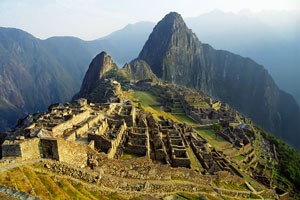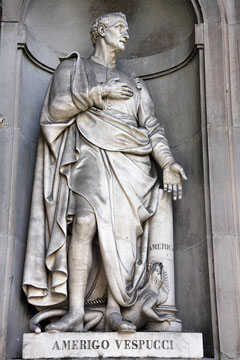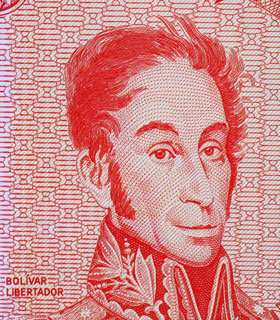
South America History and Culture
Map of South America > History | Travel Tips |
Relief Map | Topo Map
 South America was initially settled by Asians who crossed the Bering
Strait, approximately 4,000 to 5,000 years ago. These people
migrated southwards, along the west coast of North America, reaching
South America via the Isthmus of Panama.
They scattered throughout the continent, developing their own languages,
cultures, and histories. Today, South America is home to a diverse
blend of Iberian, African, and Amerindian traditions.
South America was initially settled by Asians who crossed the Bering
Strait, approximately 4,000 to 5,000 years ago. These people
migrated southwards, along the west coast of North America, reaching
South America via the Isthmus of Panama.
They scattered throughout the continent, developing their own languages,
cultures, and histories. Today, South America is home to a diverse
blend of Iberian, African, and Amerindian traditions.
The first crops of beans, squash, cotton, and potatoes were harvested by Amerindians in the Andes Region prior to 2000 BC. However, the continent's first civilized culture, which was established about 1000 BC, is considered the Chavin culture, which was located along Peru's northern coastal plain. The Chavin were known for their temples and pyramids, pottery, weaving, and for introducing South America's first metallurgy. By the sixth century A.D., the Chavin had been replaced by other Peruvian cultures such as the Moche, Nasca, and Tiwanaku.
 While Christopher Columbus was the first to land on South America in
1498, the continent gets its name from
Amerigo Vespucci, an Italian explorer who was the first to determine
that the continent was separate from Asia. Upon its discovery, both
the Spaniards and the Portuguese made moves to claim different parts of
the continent, all but eradicating the native population.
While Christopher Columbus was the first to land on South America in
1498, the continent gets its name from
Amerigo Vespucci, an Italian explorer who was the first to determine
that the continent was separate from Asia. Upon its discovery, both
the Spaniards and the Portuguese made moves to claim different parts of
the continent, all but eradicating the native population.
 By the end of the 16th century, three groups dominated the continent —
the military, wealthy families, and the Roman Catholic Church.
Using slave labor, they developed European-inspired cities such as Lima and Bogota.
Today, South America is the second most urbanized continent, after Australia.
Revolution began in the 19th century. As a result, Spanish-speaking lands were liberated
from Spain between 1810 and 1824 under the leadership of Venezuelan general
Simon Bolivar,
Argentine general Jose de San Martin,
and Chilean leader Bernardo O'Higgins;
Portuguese-speaking Brazil declared its independence from Portugal in 1822.
By the end of the 16th century, three groups dominated the continent —
the military, wealthy families, and the Roman Catholic Church.
Using slave labor, they developed European-inspired cities such as Lima and Bogota.
Today, South America is the second most urbanized continent, after Australia.
Revolution began in the 19th century. As a result, Spanish-speaking lands were liberated
from Spain between 1810 and 1824 under the leadership of Venezuelan general
Simon Bolivar,
Argentine general Jose de San Martin,
and Chilean leader Bernardo O'Higgins;
Portuguese-speaking Brazil declared its independence from Portugal in 1822.
While the continent is home to 370 million people, the fact that about half of them speak Spanish, and the other half Portuguese, means that most of them can easily communicate with one another. In some remote areas, French, English, Dutch, and Amerindian is spoken. About 90 percent of South Americans are of the Roman Catholic faith.
While most South Americans can trace their roots back to Spain or Portugal, waves of immigration are responsible for the diverse ethnicity that includes Italians, Germans, Africans, and Asian Indians.
All rights reserved.
South America Map South America History & Culture • South America Travel & Tourism Relief Map> • South America Topographic Map